Editorials
Scream Fans, We Need to Talk: An Open Letter to Toxic Fans

Dear Scream Fans,
The first Scream movie was released in 1996 when I was in middle school. I was scared of everything at the time—I was once scared to meet a cousin from Puerto Rico because his name was Freddie, and I was positive he would be Freddy Krueger. My parents were always watching movies like Predator, Alien, Terminator, and Jaws, and all of them terrified me.
The things I remember most about Scream’s release are that my parents had the same cordless phone as Drew Barrymore’s Casey Becker (which I’d only seen in the trailers) and a girl walking ahead of me in the middle school hallway, saying, “That movie is gay. Drew Barrymore dies in the beginning.” My first big spoiler, alongside some casual homophobia!
Falling in Love with Scream’s Characters
Later that year, I rented Scream from Blockbuster with some friends and fell immediately in love. At that point, I’d never watched a movie that scared me so much that I genuinely loved and cared about all the characters. It felt so cool, so hip. The women were tough and fashionable, while the guys were all hot. I was fully in.
Scream 2 came out a year later and would become the first in the franchise I saw in theaters. Now we’re coming up on the release of Scream VI, which officially means this franchise has been releasing movies for over half my life. The last standing characters from that first film are my absolute favorite final girls, Courteney Cox’s Gale Weathers and Neve Campbell’s Sidney Prescott.
Scream VI: Sidney’s Absence and Gale’s Return
Unfortunately, Sidney will not be in this new installment because Paramount wouldn’t pay her what she deserves. But, inversely, we are still getting the beloved shit-talking Gale Weathers—alongside the return of Hayden Panettiere’s fan favorite Kirby Reed from Scream 4. We are, of course, also getting the return of the new batch of survivors from 2022’s Scream. For me, this franchise has always been the horror franchise. The characters are always dynamic, and I always care about them. Sure, there are older franchises with more sequels and scarier villains, but this one is it for me. It’s why I love horror. But most importantly, no one tells someone to “fuck off,” quite like my gay icon Gale Weathers.
The Scream Franchise Toxic Fandom Problem
So, tell me why over the past year, I’ve had more Twitter accounts with Sidney Prescott as their avatar on social call me a “fake fan” than ever before in my life? What the fuck even constitutes a “fake fan”? If you’re a fan, you’re a fan. Hosting a queer pop-culture podcast (Slayerfest 98), cohosting a horror podcast (My Bloody Judy), and running the social media account for both over the last few years has taught me how even the fandoms I’m in, the fandoms I love, can be extremely toxic. The fact that any adult would even use the term “fake fan” would be truly laughable if it wasn’t also accompanied by a zillion more harassing tweets and comments.

Neve Campbell’s Exit and Fan Outrage
Am I upset Neve Campbell isn’t coming back? Fucking of course I am! She is the face of the franchise—without Sidney Prescott there would’ve never been a Scream franchise. Does that mean I will take that anger out on the folks doing the new movie? No, I’m not a child—I know that’s all because of the higher-ups not caring. The original script for Scream VI had a role for Sidney—the creative team clearly did want her back. Do these people who have turned their whole personality into hating the current state of the Scream franchise know they could spend their time doing literally anything else? Do these people who say, “Wes Craven wouldn’t have wanted this,” talk to him from beyond the grave? Do these people know Wes Craven killed Heather Langenkamp’s beloved final girl Nancy Thompson in the 3rd Nightmare on Elm Street movie? Do they realize they sound just like the killers in 2022’s Scream?
Why Scream Fandom Toxicity Hurts the Community
Before the new film’s release, two horror podcasters told me they’d never cover Scream because the fandom was so toxic online. I was so young and naïve back then I assumed they were exaggerating—but, dear reader, they were not. My horror pod once did a recording on things we’d like to see the franchise do next, and foolishly, my cohost Zachary and I both said Sidney deserved a break. We felt the franchise should stop punishing Sidney and move on to new motivations for Ghostface; she deserved to live a happy life. We also talked about new opening kills they could do. I talked about my idea (aka my fanfic) of Gale getting attacked at a Stab-themed drag competition where she tells Trixie and Katya to “fuck off” backstage. So many comments asked us if we’d ever watched a Scream movie. When we did a livestream and talked about how much we wanted Kirby to come back, someone in the chat wouldn’t stop telling us how stupid we were to think they’d ever bring her back (well guess what Mimi).
Understanding Toxic Behavior in Scream Fandom
What makes fans become this way? What joy does it bring them to find folks who enjoy the new additions to the franchise that they hate and tell them they aren’t real fans for liking it? These people clearly love the original movies—we love the same thing, so why fight? I don’t care if some random person online doesn’t share the same opinion on a movie as me, so why do they?
I have friends who didn’t like 2022’s Scream, and that’s fine! Why would I be mad at that? I disagree with it, and that’s normal. I haven’t liked many movies folks have loved, and I don’t go to their social media accounts to harass them for it.
The Loud Minority in Scream Franchise Fandom
And it’s, of course, these toxic folks who happen to be loudest online, unfortunately. They are absolutely not the majority of Scream fans. All of the Scream fans I’m friends with (the ones who did and did not like the newest one) are all fun and chill.

Comparing Scream to Other Toxic Fandoms
It’s like Star Wars! I love Star Wars, I grew up on Star Wars but the toxic fans who are the loudest online make it pretty impossible to post anything about Star Wars without drawing in at least someone telling you that your mom deserves to die over your opinion (I once had folks angry in my Twitter mentions over a viral tweet about loving Baby Yoda). It’s mostly turned me off from the franchise so I’ve become more of a casual fan now. My podcast Slayerfest 98 talks Buffy the Vampire Slayer and all things Marvel, and you can be sure I’ve encountered toxic fans with both. The toxic corner of Buffy fans are the ones who get furious over Sarah Michelle Gellar’s iconic slayer’s boyfriends—which is totally not the point of the show.
It’s a discourse I truly wouldn’t give a shit about if not for the angry Spuffy fans that once campaigned for a publisher to drop one of my cohost’s novels and then told me I needed to fire her. All over her hot take on the beloved vampire, Spike. Then there’s the many toxic corners of the Marvel Cinematic Universe where folks will get furious if you say anything bad about it or the folks who get mad if you say anything nice about any of the properties where, you know, a woman exists as more than a side character. Then there’s the corner of the internet that are Marvel Haters and will hate on anything Marvel.
A Call for Positive Fandom Culture
The internet is a hellhole.
We are constantly dealing with exhausting election cycles, racists, homophobes, mass shooting news, and the ever-charming incels. Fandoms should not be like that. They should be fun! Celebrate what you love about the fandom! The killers in the newest Scream weren’t supposed to be models of how one should act in a fandom…and yet! And if you can’t just enjoy the parts of a fandom that you love and just can’t help screaming online about how much you hate Jenna Ortega and Melissa Barrera (the franchise’s first non-white Final Girls), then at least leave me alone.
With love,
Ian Carlos Crawford
Editorials
Is ‘Scream 2’ Still the Worst of the Series?
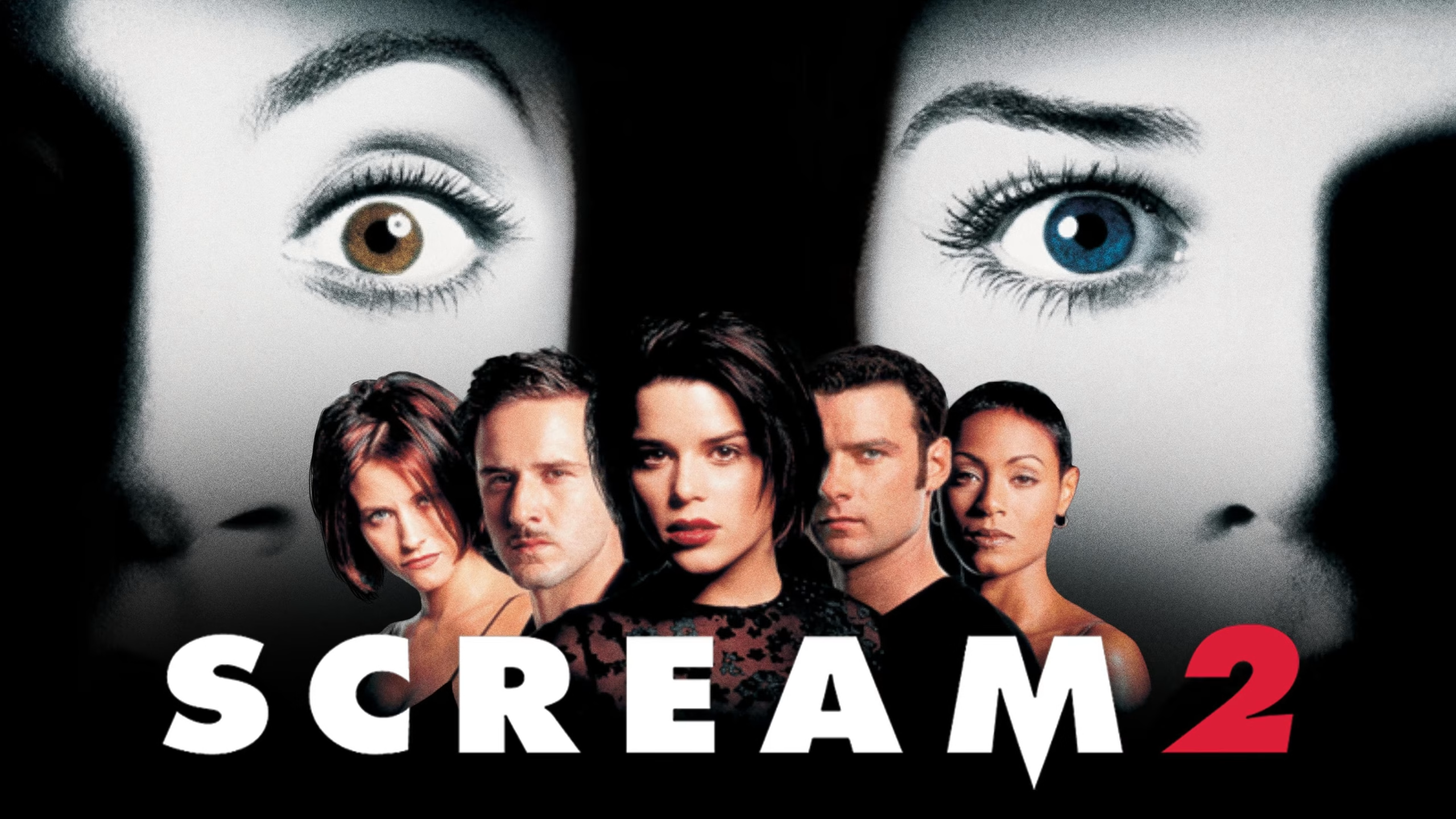
There are only so many times I can get away with burying the lede with an editorial headline before someone throws a rock at me. It may or may not be justified when they do. This article is not an attempt at ragebaiting Scream fans, I promise. Neither was my Scream 3 article, which I’m still completely right about.
I do firmly believe that Scream 2 is, at the very least, the last Scream film I’d want to watch. But what was initially just me complaining about a film that I disregard as the weakest entry in its series has since developed into trying to address what it does right. You’ve heard of the expression “jack of all trades, master of none”, and to me Scream 2 really was the jack of all trades of the franchise for the longest time.
It technically has everything a Scream movie needs. Its opening is great, but it’s not the best of them by a long shot. Its killers are unexpected, but not particularly interesting, feeling flat and one-dimensional compared to the others. It has kills, but only a few of them are particularly shocking or well executed. It pokes fun at the genre but doesn’t say anything particularly bold in terms of commentary. Having everything a Scream movie needs is the bare minimum to me.
But the question is, what does Scream 2 do best exactly? Finding that answer involves highlighting what each of the other sequels are great at, and trying to pick out what Scream 2 has that the others don’t.

Scream 3 Is the Big Finale That Utilizes Its Setting Perfectly
Scream as a series handily dodges the trap most horror franchises fall into: rehashing and retreading the same territory over and over. That’s because every one of its films are in essence trying to do something a little different and a little bolder.
Scream 3 is especially bold because it was conceived, written, and executed as the final installment in the Scream series. And it does that incredibly well. Taking the action away from a locale similar to Woodsboro, Scream 3 tosses our characters into the frying pan of a Hollywood film production. Despite its notorious number of rewrites and script changes (one of which resulted in our first solo Ghostface), it still manages to be a perfect culmination of Sidney Prescott’s story.
I won’t repeat myself too much (go read my previous article on the subject), but 3 is often maligned for as good a film as it turned out to be. And for all of its clunkier reveals, and its ghost mom antics, it understands how to utilize its setting and send its characters off into the sunset right.
Scream 4’s Meta Commentary Wakes Scream from a Deep Sleep
As Wes Craven’s final film, Scream 4 has a very special place in the franchise. It was and still is largely adored for bringing back the franchise from a deep 11-year sleep. With one of the craziest openings in any horror film, let alone a Scream film, it sets the tone for a bombastic return and pays off in spades with the journey it takes us on.
Its primary Ghostface Jill Roberts is a fan favorite, and for some people, she is the best to ever wear the mask. Its script is the source of many memorable moments, not the least of which is Kirby’s iconic rapid-fire response to the horror remakes question. And most importantly, it makes a bold and surprisingly effective return for our main trio of Sidney, Dewey, and Gale, whose return didn’t feel trite or hammy when they ended up coming back to Woodsboro for more.
Craven’s work on 4 truly understands the power its predecessors had exerted on the horror genre, both irreverent in its metacommentary and celebratory of the Scream series as a whole. The film is less of a love letter to the genre and more of a kicking down of the door to remind people what Scream is about. 4’s story re-established that Scream isn’t going away, no matter how long it takes for another film, and no matter how many franchises try to take its place.
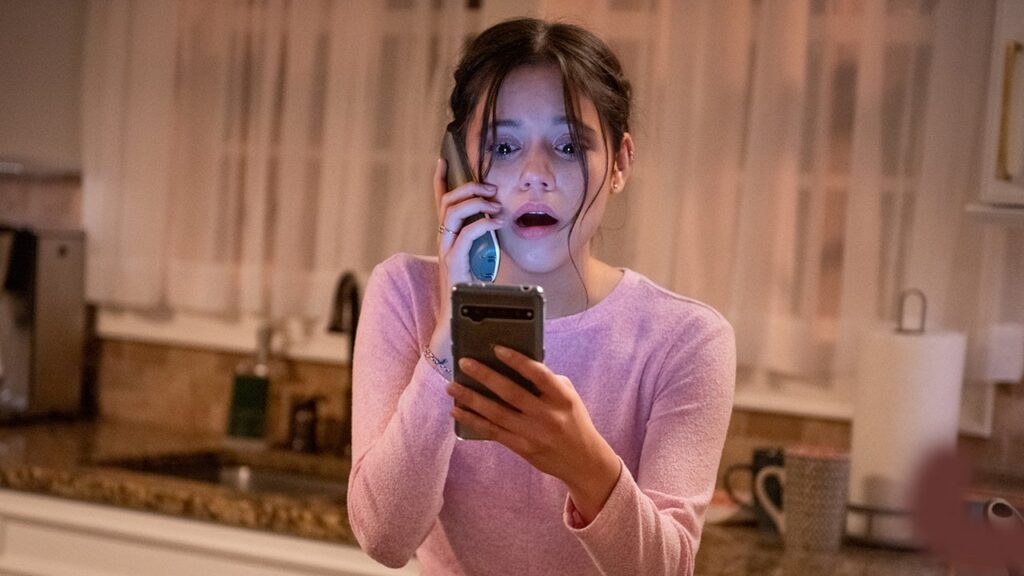
Scream 5 & 6 Is Radio Silence’s Brutal and Bloody Attitude Era
Put simply, Scream 5 and 6’s strong suit was not its characters. It was not its clever writing. The Radio Silence duology in the Scream series excelled in one thing: beating the hell out of its characters.
Wrestling fans (of which there is an unsurprising amount of crossover with horror fans) will know why I call it the Attitude Era. Just like WWE’s most infamous stretch of history, Radio Silence brought something especially aggressive to their entries. And it’s because these films were just brutal. Handing the reins to the series, Bettinelli-Olpin and Gillet gifted a special kineticism to the classic Scream chase sequences, insane finales, and especially its ruthless killers.
All five of the Ghostfaces present in 5 and 6 are the definition of nasty. They’re unrelenting, and in my humble opinion, the freakiest since the original duo of Stu Macher and Billy Loomis. Getting to hear all the air get sucked out of the room as Dewey is gutted like a fish in 5 was still an incredible moment to experience in theatres, and it’s something I don’t think would have happened if the films were any less mean and any less explosively violent.
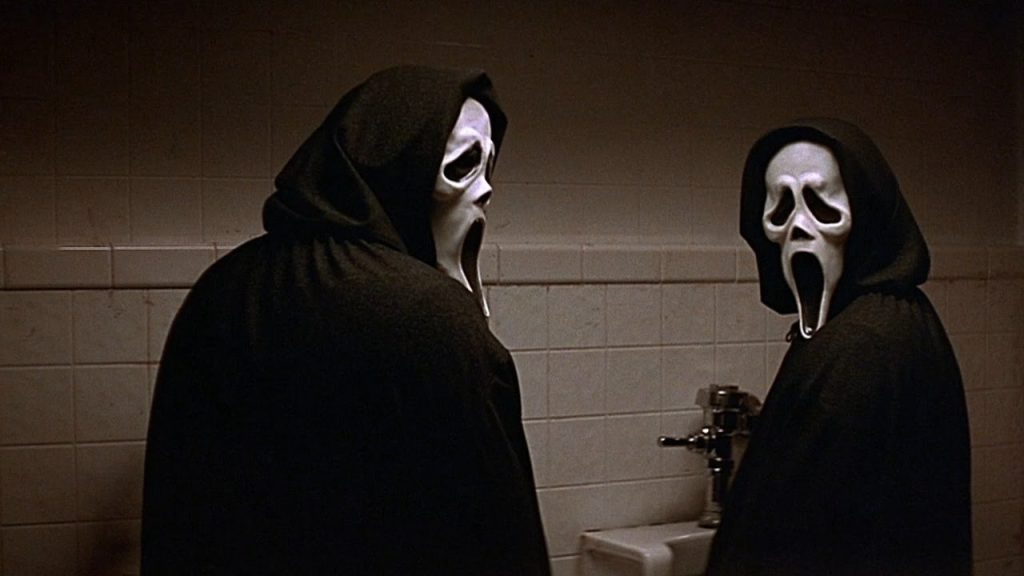
So, What Does Scream 2 Do Best Exactly?
So now, after looking at all these entries and all of their greatest qualities, what does Scream 2 have that none of the others do? What must I concede to Scream 2?
Really great character development.
Film is a medium of spectacle most of the time, and this is reflected in how we critique and compliment them. It affects how we look back on them, sometimes treating them more harshly than they deserve because they don’t have that visual flash. But for every ounce of spectacle Scream 2 lacks, I have to admit, it does an incredible job of developing Sidney Prescott as a character.
On a rare rewatch, it’s clear Neve Campbell is carrying the entirety of Scream 2 on her back just because of how compelling she makes Sidney. Watching her slowly fight against a tide of paranoia, fear, and distrust of the people around her once more, watching her be plunged back into the nightmare, is undeniably effective.
It’s also where Dewey and Gale are really cemented as a couple, and where the seeds of them always returning to each other are planted. Going from a mutual simmering disrespect to an affectionate couple to inseparable but awkward and in love is just classic; two people who complete each other in how different they are, but are inevitably pulled back and forth by those differences, their bond is one of the major highlights throughout the series.
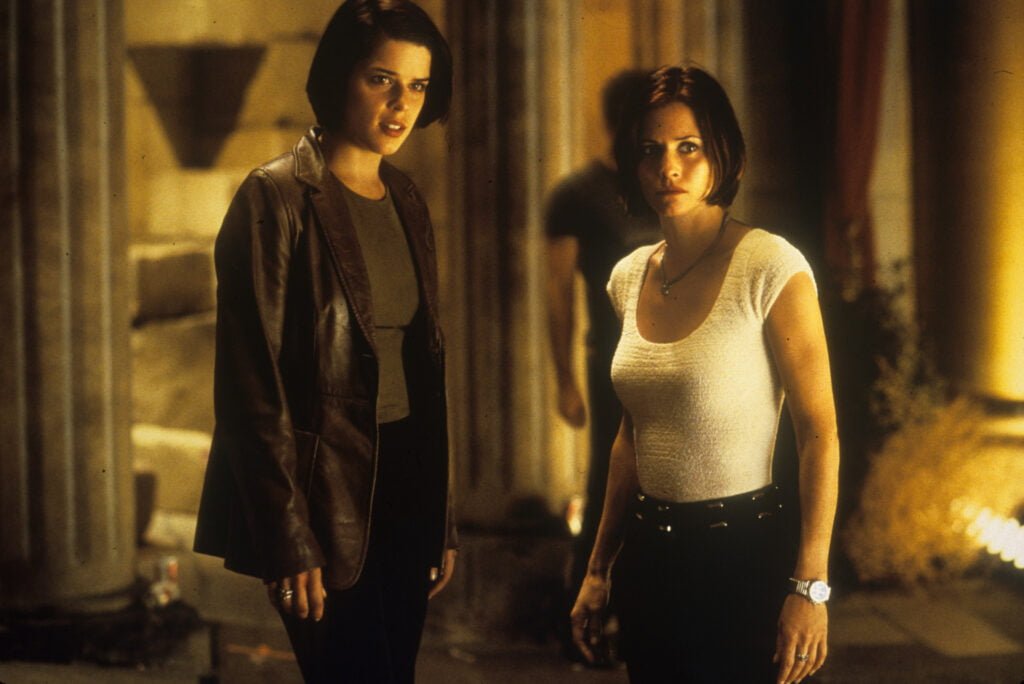
Maybe All the Scream Films Are Just Good?
These three characters are the heart of the series, long after they’ve been written out. I talk a big game about how Scream 3 is the perfect ending for the franchise, but I like to gloss over the fact that Scream 2 does a lot of the legwork when it comes to developing the characters of Dewey, Gale, and especially Sidney.
Without 2, 3 just isn’t that effective when it comes to giving Sidney her long deserved peace. Without 2, the way we see Sidney’s return in 4 & 5 doesn’t hit as hard. All of the Scream movies owe something to Scream 2 in the same way they owe something to the original Scream. I think I’ve come to a new point of view when it comes to the Scream franchise: maybe there is no bad entry. Maybe none of them have to be the worst. Each one interlinks with the others in their own unique way.
And even though I doubt I will ever really love Scream 2, it has an undeniable strength in its character writing that permeates throughout the whole franchise. And that at the very least keeps it from being the worst Scream film.
Editorials
The Halloween Franchise Peaked With H20 Here’s Why
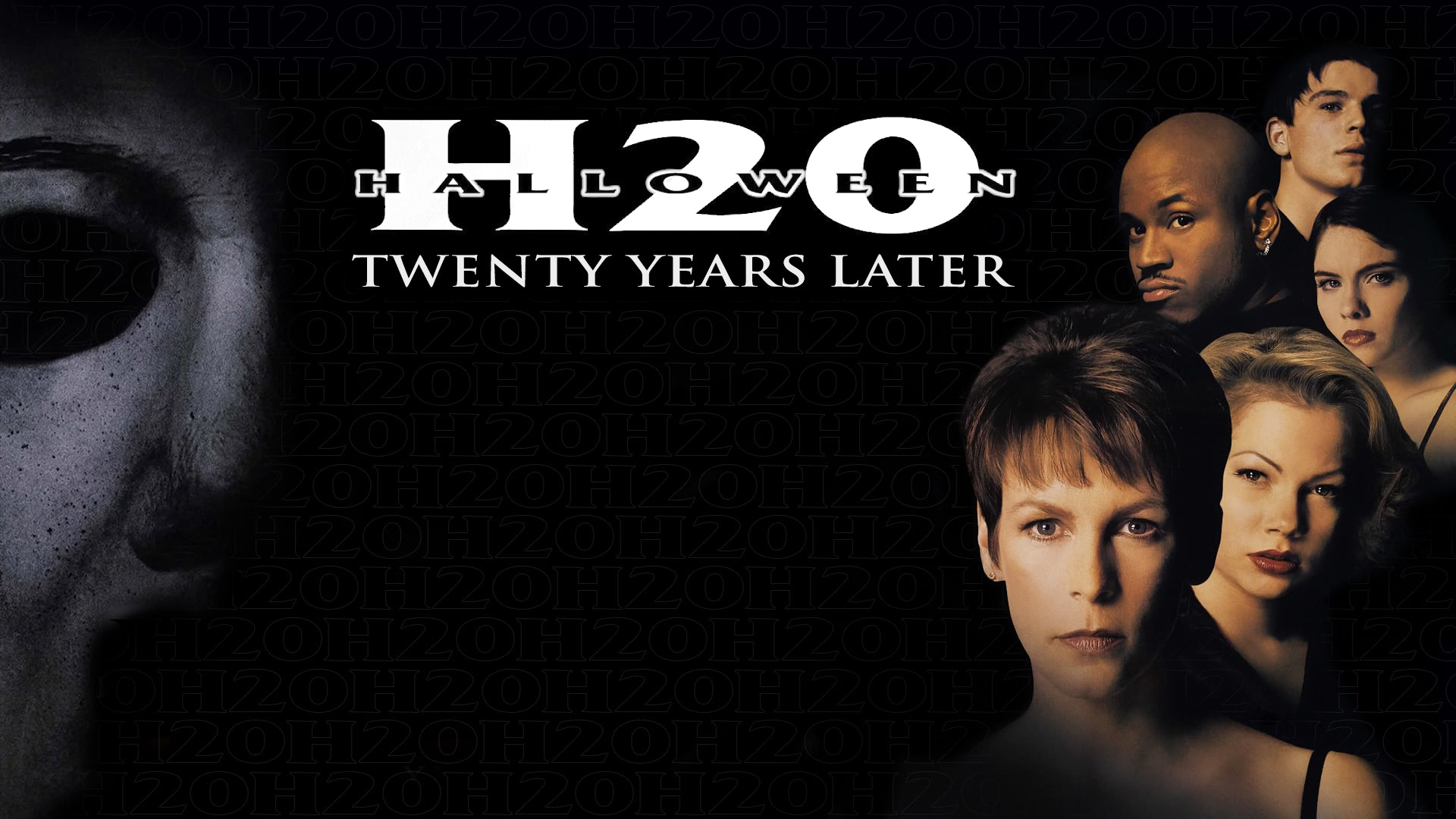
I’m going to begin this conversation with a sort of insane thought. Halloween as a franchise maybe should have ended with its first film.
That’s not to say there’s no value in the Halloween films. Much to the contrary, I like the first three films a lot. I recommend Halloween 3: Season of the Witch to people an annoying amount; I even try to watch it a few times every October to keep the vibes up. And as you already know from clicking on this article, I enjoy Halloween H20: 20 Years Later quite a bit.
I’ve even softened up on the Rob Zombie remake duology over the years. I don’t like them, but it’s like getting flowers, I can still appreciate them. However, Halloween, as a series, has long suffered from its own success. And sometimes, it feels like it’s just going to keep suffering.
HALLOWEEN’S FIRST BOLD CHOICE AFTER 16 YEARS OF WAITING
It’s easy to forget that John Carpenter’s original Halloween was effectively the Paranormal Activity of its time. Flipping a cool $70 million and change off of a $300,000 budget, it has had a genuinely immeasurable impact on the cinematic landscape and how horror films are made.
For some, that’s a bad thing. Notoriously, my beloved 3rd entry in the franchise was considered a hard misstep by audiences. Everyone knows the story; the resounding “Where’s Michael?” response to the third entry gunned down Carpenter’s desires to turn Halloween into an anthology series. So, after going into hiding for 5 years, Halloween 4 continued the story of Michael in 1988.
And then it just kept going.
As the years went on, it became progressively harder and harder to innovate, resulting in some very odd plotlines and tones. Which is why Halloween H20 is where the franchise peaked. Because it had a rare essence to it. It had guts.
It was willing to actually kill the series once and for all, even if it was impossible to do so.
EVIL DOESN’T DIE TONIGHT, THE CONTRACT SAYS SO
Before David Gordon Green’s reboot trilogy brought Laurie back as a Sarah Connor style badass, H20’s pre-production had reinvented Strode to usher in the 20th anniversary of the first film. She went from a resilient young woman into a traumatized survivor running from her past.
The original concept for Halloween H20 involved a substance abusing Laurie Strode trying to get clean so she could die with dignity against an escaped Michael. In a turn of events, she would find the will to live and kill him once and for all. It was a concept Jamie Lee Curtis was passionate about, understandably so. Laurie wasn’t the first final girl, but she was the codifier for that ideal, in a way Jess Bradford and Sally Hardesty before her weren’t. It would have made for a harrowing exploration of what was debatably the most important final girl ever.
That isn’t what happened.
There is an infamous video from a Q&A panel with Jamie Lee Curtis where she explains that the blame for Michael surviving H20 lies primarily with one man: the late great Moustapha Akkad. Akkad was famous for his business acumen, but that desire to see the Halloween franchise make bankroll had ultimately stolen away Laurie’s triumphant victory over Michael.
You see, Akkad had written a clause into the contracts surrounding the film. A clause that she could not, in no uncertain terms, kill Michael Myers. Michael would live, no matter what Laurie did. But thanks to the meddling mind of Scream creator Kevin Williamson, who had been brought on to work on the screenplay for H20, Laurie did get her vengeance in a way.
LAURIE STRODES RETURN DONE RIGHT
The actual H20 follows Laurie Strode in hiding years after Halloween 2, ignoring the events of the sequels. She’s the headmistress of a boarding school, living under a fake name far from Haddonfield with her son. But still, she can’t let go of that Halloween night. She sees Michael’s face, The Shape, everywhere. She can barely stomach talking about what happened. But when Michael kills Dr. Loomis, nurse Marion Chambers, and then finds her, Laurie is forced to face her greatest fear once and for all.
And she does. After a prolonged chase and fight on the grounds of the school, she refuses to let a wounded Michael be taken into custody. Stealing a cop’s gun and an ambulance, Laurie runs Michael off a cliff and pins him against a tree with the vehicle. She shares a brief moment with him, inscrutable eyes reflecting Michael’s. They could be expressing a number of possible emotions. Is it empathy? Hatred? Pity? Fear leaving her for the final time?
Regardless of what it is, she’s done feeling it. With a hefty swing, she decapitates him with a fire axe, ending Michael for the last time. It’s over.
Roll credits. Audience cheers. The world is healing.
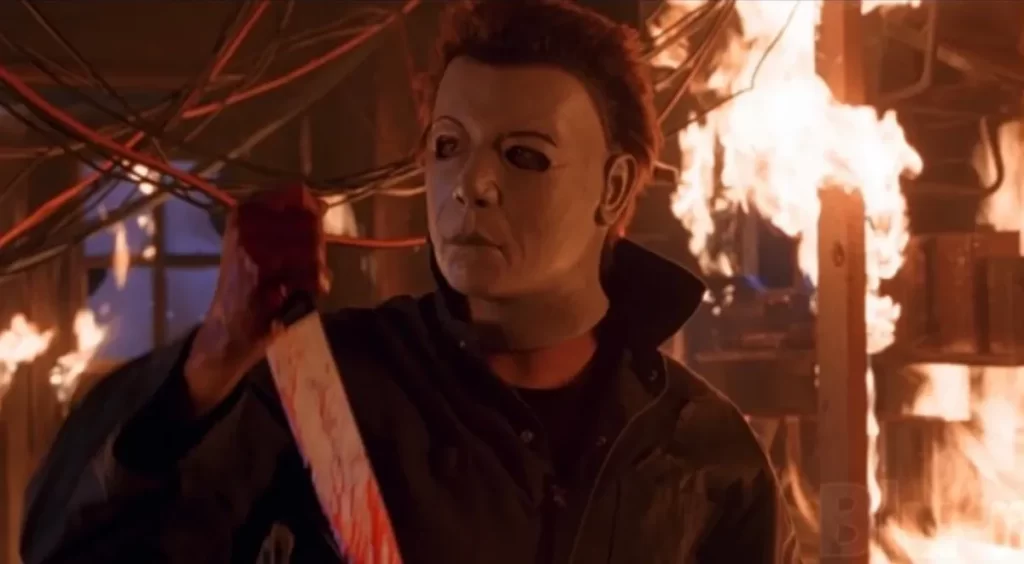
AND THEN HALLOWEEN: RESURRECTION HAPPENS
Yes, and then Halloween: Resurrection happens. Laurie is killed in the first few minutes, revealing that Michael pulled the old bamboozle switcheroonie in the previous film. She had actually just killed an ambulance driver that Michael had put the mask on. Williamson’s trick of making both Laurie and the audience believe they had killed Michael worked. But that same trick curled a finger on the monkey’s paw and led to what is definitively the worst film in the franchise.
A proto-internet streamer subplot. The kid from Smart House is there for some reason. Busta Rhymes hits Michael Myers with the Charlie Murphy front kick from that one Dave Chappelle sketch about Rick James.
Roll credits. The audience boos. Everyone who spent money on it feels like they’re being stamped to death by horses.
HALLOWEEN AS A FRANCHISE IS TERRIFIED OF ENDINGS
And this is why I say that Halloween H20 is probably the best we’re going to get out of the series, maybe ever. It is a series that, at its core, has had producers terrified of endings since even Halloween 2. Carpenter never intended there to be a sequel, or any follow ups for that matter. That was mostly the work of producer Irwin Yablans, who pushed hard to continue the story of Michael. And then, eventually, it was the work of every other producer who demanded they milk Halloween for all its worth.
H20 is a film that is antithetical to that idea. When watched as intended, ignoring Resurrection, it’s fantastic. As the end of Laurie and Michael’s story, one that shows evil is weak without fear to bolster it, it is pretty much the perfect finale. Hot off the heels of Scream’s success in 1996, H20 is often talked about as an attempt to cash in on the meta-horror craze of the 90s and early 2000s. The way people discuss it, you would think it was supposed to be a tongue-in-cheek slasher that made fun of itself and Halloween’s legacy. But in reality, aside from its humor, it ends up being quite reflective and thoughtful of that legacy.
It’s not spiteful of the films that came before it because it ends by tricking the audience. It’s what that trick represents, boldly spitting in the eye of Halloween being held prisoner for money. Mocking Halloween being stuck in an eternal cycle of rinsing and repeating the same events. It doesn’t care about franchising or longevity; it cares about telling a good story and letting its hero rest. It’s respectful to Carpenter’s creation in a way that other attempts to continue the series simply weren’t.
H20 TELLS AN ENDING, HALLOWEEN ENDS TRIES TO SELL YOU ONE
It begs the question: why does H20 work here in how it ends the series, but Halloween Ends doesn’t?
All of Ends biggest issues stem from the fact that, unlike H20, it’s trying to sell you an ending instead of making one that feels right. The maudlin closer it gives doesn’t feel real. It doesn’t feel true to the Laurie it shows us, or any other iteration of the character for that matter. It doesn’t feel genuinely emotional in any regard.
And that’s because Ends as a whole doesn’t have the spirit that H20 does. Ends is, first and foremost, a highlight reel reminding you of how cool Halloween is instead of understanding why any of its previous entries were effective. From its marketing to its incredibly clunky climax, it feels like it’s an advertisement for never letting go of Halloween, even when it should have been done a while ago. And that’s just the wrong lesson to leave on.
JANET LEIGH’S CAMEO IN H20 SPEAKS VOLUMES
Halloween H20 has a pretty famous cameo from Janet Leigh in it, an OG scream queen and the real-life mother of Jamie Lee Curtis. In it, they have a heart-to-heart as fictional characters Laurie Strode and Norma Watson. It’s made more impactful when you realize it was Leigh’s penultimate film performance, and her final performance in a horror film.
The moment serves as a cute in-joke on their real-life relationship, but more than that, it foreshadows the film’s ending. Norma urges Laurie to move past her fear, to relish her future as a survivor instead of being caught up in the past and reliving the same night over and over again.
I find this scene even more poignant now, seeing how neatly it reflects on what has happened to Halloween as a franchise in the years since the original, and especially since H20. It’s a series that got stuck in trying to continue the same story and just got progressively worse at it. In some way, it feels like it’s urging us to make a choice. No matter how deep a legacy of fear may be, it must come to an end at some point. There is no need to cling to the same stories over and over. We can enjoy them for what they are without returning to them.
No matter what the future of the Halloween franchise is, only a viewer themselves can choose where the story ends. It doesn’t matter how many times the studio brings him back, you have to make the choice. Only you decide when it ends. And for my money, H20 is the best ending you can ask for.























